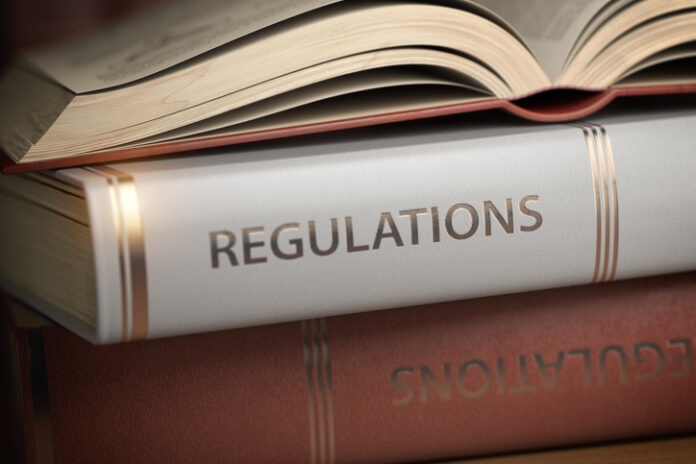The Competitive Enterprise Institute (CEI) has released the 2022 edition of their long-running Ten Thousand Commandments series, an annual report that examines the size and reach of the federal regulatory state.
CEI regards the cost of regulations as a “hidden tax” the federal government imposes on Americans.
This 2022 edition, authored by CEI Vice President for Policy Wayne Crews, “examines the scope of the federal regulatory state to help illustrate the need for transparency, disclosure, and congressional accountability,” according to a press release released in conjunction with the report.
Hidden Tax, High Costs
The report estimates the total cost to American taxpayers for “regulatory compliance and [the] economic effects of federal intervention” amounts to $1.927 trillion annually, or about 33 percent of projected federal outlays. Crews notes that if U.S. regulation were its own country, it would be the eighth-largest economy in the world.
“The regulatory hidden ‘tax’ exceeds individual income taxes, estimated at $1.705 trillion for 2021,” said Crews. “It rivals individual and corporate federal income tax receipts combined, estimated at $1.973 trillion in 2021.”
The regulatory tax exceeds the payroll tax or income tax rate paid by many individuals and families, according to the household figures Crews cites.
“If one assumed that all costs of federal regulation flowed all the way down to households, 131 million ‘consumer units,’ U.S. households would ‘pay’ $14,684 annually on average in a hidden regulatory tax [amounting] to 17 percent of the average pretax income of $84,352 and 24 percent of the average expenditure budget of $61,334,” said Crews.
By Crews’ calculation, the hidden tax of regulations exceeds every item in the household budget except for housing.
“A typical American household ‘spends’ more on embedded regulation than on health care, food, transportation, entertainment, apparel, services, or savings,” said Crews, in the press release.
Regulations Fell Under Trump
In 2019, the final year of President Donald Trump’s administration, the total number of final rules, 2,964, was only the second time since the federal government began keeping records on the issue in the 1970s that the number of regulation issued was below 3,000, says Crews.
During Trump’s first year in office in 2017,61,308 total pages of regulations were added to the Federal Register, the least number of pages of regulations added since 1993, and a 36 percent drop from the highest year of Barack Obama’s presidency, where the Register reached its largest size up to that time. The 2021 Register is back up to 74,352 pages.
According to Crews, of the 95,848 final rules issued since the passage of the Congressional Review Act in 1996, only 20 rules have been revoked.
Executive Orders Easily Reversed
Most of Trump’s deregulatory agenda, however, was achieved via executive order and was easily revokable after Joe Biden’s administration took over in 2021, said Crews and Ryan Young, in a CEI blog post accompanying the release of the report.
“After President Biden won the 2020 election, he undid the Trump-era reforms that Congress never protected, and kept most of Trump’s big-government policies,” wrote Crews and Young. “Then he began implementing a ‘whole-of-government’ approach to policy making.
“Rather than have agencies focus on their individual missions, the whole-of-government approach enlists every agency to work on larger policy goals such as climate change or social justice, even if those have little to do with an agency’s mission,” said Crews and Young. “This change in management philosophy hasn’t yet had much impact on the total number of rules coming out or increased their cost; estimated burdens rose from $1.9 trillion to $1.927 trillion from 2020-2021…but the change is already creating headaches at multiple agencies.”
Tim Benson (tbenson@heartland.org) is a policy analyst in the Government Relations Department at The Heartland Institute.
For more on regulations and the cost of regulations, click here.


























